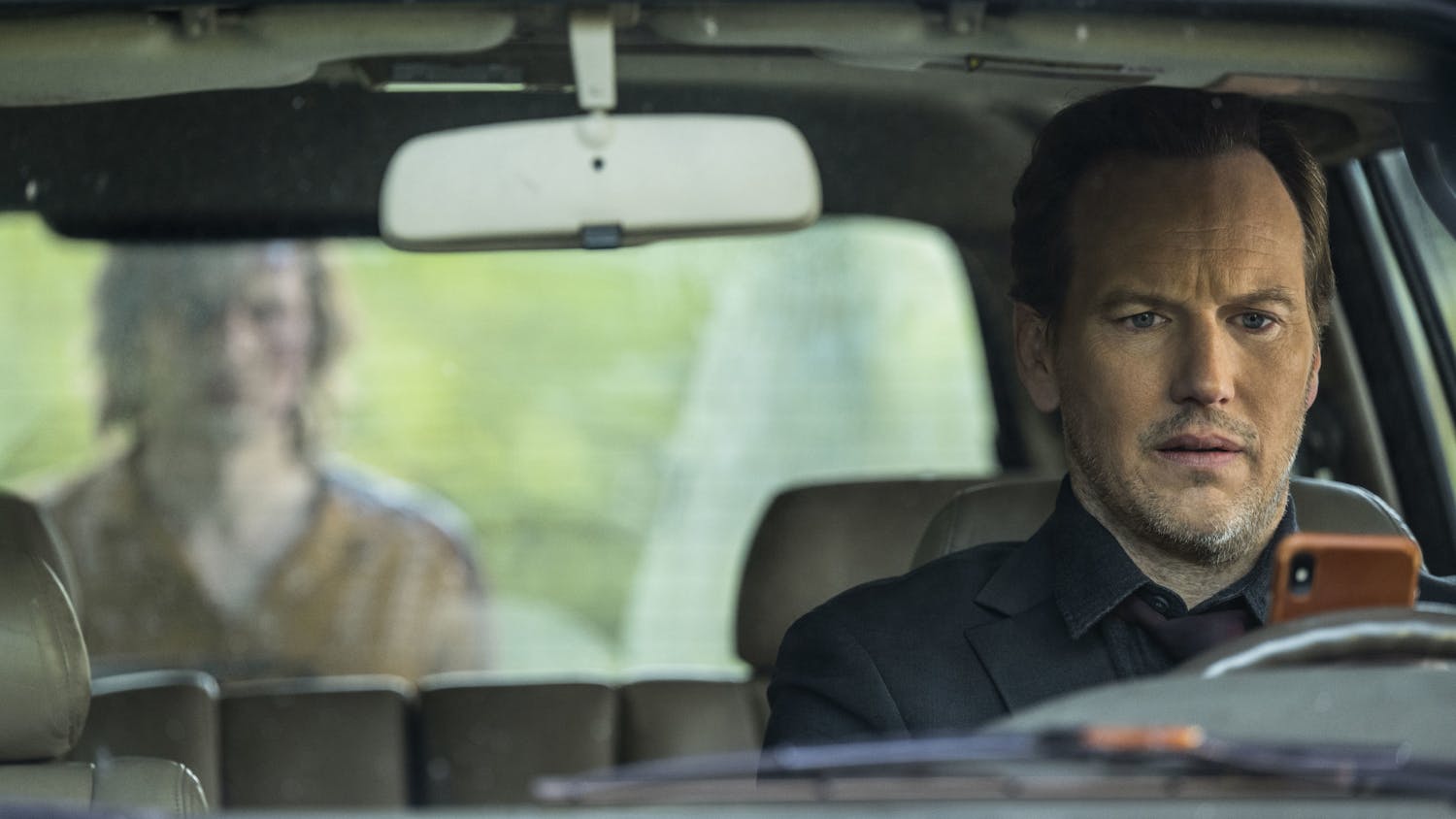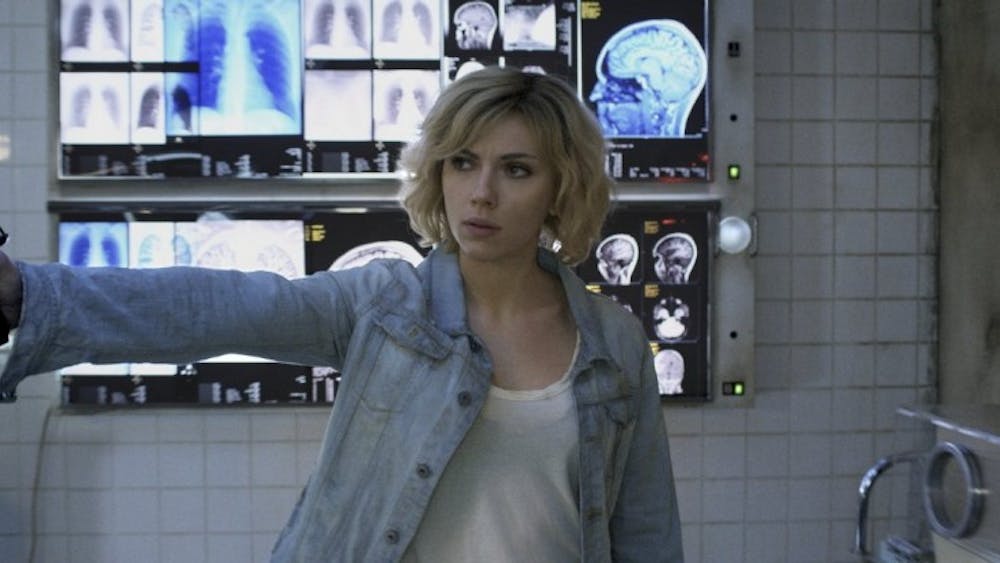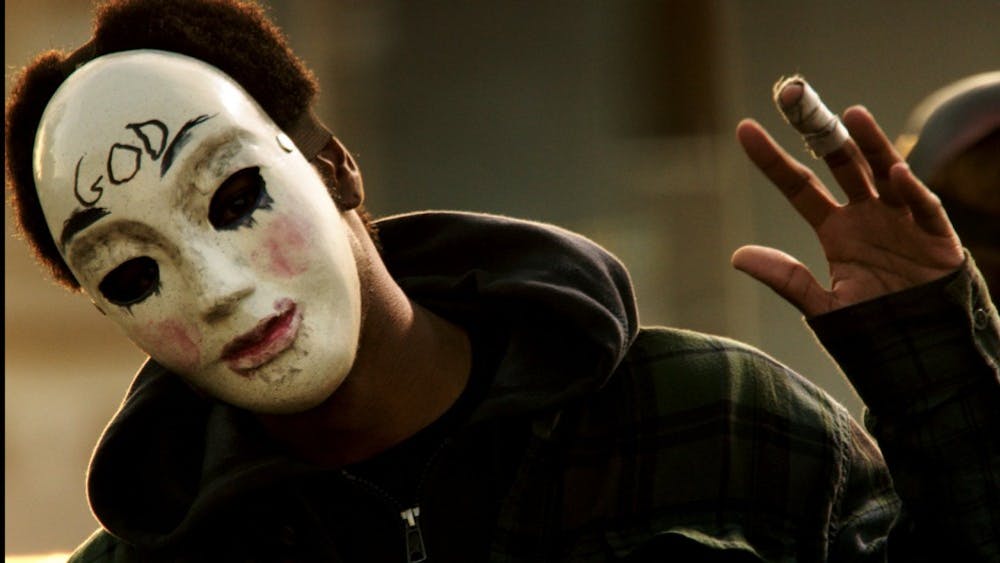Michael McMahon and Luke Hobson spent close to 15 Friday nights last semester fighting.\nThey'd set up their camcorder, take a light reading and duke it out as the film rolled. Between takes, they'd instruct extras on the logistics of starring in a slasher flick. They'd tell them which direction to run, how to scream properly and how to land the perfect right hook.\nAnd even when the IU Police Department intervened, their concern didn't stop the amateur filmmakers from finishing their project, "PICK," a "basic, run-of-the-mill" horror flick that Hobson says no one involved in the project expected to gain any sort of on-campus notoriety.\nHobson, a junior studying telecommunications, and McMahon, a junior studying fine arts, wanted to gain some real hands-on experience working with film and editing. So McMahon brainstormed a bit and turned to high school buddy Joel Finner with a proposition.\n"I had seen some stuff Joel had done in high school, and I realized, 'Man, we've got to do something else,'" McMahon says. "He knew a lot about filmmaking, so he whipped up some ideas and we started working."\nThe group began planning around spring break last year and worked until the end of the school year, sometimes devoting as many as 40 hours a week to production. Actors solicited from the theater department joined the directors on their Friday night marathon sessions in McMahon or Hobson's rooms in Read Center. The first few hours were spent writing and mapping out scenes; following the planning meeting, the group would set out across campus to shoot in the wee hours of Saturday morning. \nThe most common problem? Bloody noses.\n"We had to map out these fighting scenes, and we really didn't know each other that well," Hobson recalls as he casts a sidelong glace at McMahon. "I don't think we realized how weird it would be, hitting each other like that."\nWhen the flick started gaining airtime on WTIU, the guys were a bit taken aback.\n"We really didn't expect anyone to see it but us," Hobson says. "But all of a sudden, it aired on a Friday night and people started calling and randomly e-mailing us about it."\nHe shakes his head.\n"What started out as a good time amongst friends really changed. It was weird."\nThough financial difficulties forced Finner to leave IU, McMahon says he's coming back this fall to start working on their latest endeavor, a yet-unnamed film in the early stages of production.\n"The quality is a lot higher this time around," McMahon says. "We're using a digital camera, and the audio will be better than before."\nAnd while the guys claim the telecommunications department "hasn't been too supportive" and the "crazy looks" they get from passersby while shooting on location on campus "get annoying," they're undaunted.\n"We really do what we could with who and what's around," Hobson says. "The logistics are all us, and a lot of people don't understand. But what we're doing is productive, and we enjoy it."\nIU alumnus Jeremy Putnam claims the style of his work can't really be classified -- "not anything that you would find in a filmmaking book anyway."\nHe begins with the script, which he believes to be the crux of the entire project. He then chooses locations and begins casting, often picking certain parts for selected actors and writing in parts as the script progresses. There's no real rhyme or reason to his shooting sequence, he says he just tries to keep on schedule.\n"I just figure out what the story is really about and try to tell the story as effectively as I can," Putnam says. "I shoot in whatever sequence is most beneficial to time constraints."\nHe deems editing the most difficult stage in the entire process. Putnam works with digital video, allowing him to edit everything on his own computer and cutting costs. Though he plans to work with film on later projects, video -- his current medium of choice -- is cheaper to use. \nPutnam has also has encountered a certain dubiousness from peers and adults when they discover he's into film, yet he meets criticism with an unjaded eye.\n"When I tell people I'm making a film, most are very skeptical," Putnam says. "But once you talk to them and make them understand what you're trying to do, they end up asking for a part."\nMichael White, director of Bloomington Community Access Television Services, has worked with independent films since his junior high days and says technological developments have transformed the genre. \nAs an Indianapolis high school student, White used silent eight millimeter film to record his projects. If he was lucky, he managed to dub sound on the recording somehow to "actually get something playable."\nIn the mid-1970s, super-8 film use became more widespread, allowing filmmakers to utilize magnetic sound tracks. Shortly thereafter, reel-to-reel video exploded onto the scene and a tremendous number of small films began cropping up on the indie movie scene.\nCiting a "frustrating experience" with the IU Telecommunications Department as an impetus for him to enable young filmmakers to affordably produce creative work, White established CATS through the Monroe County Public Library. The program enables students to gain hands-on experience with digital recording and editing equipment free of charge. All that's needed is a library card and proof of residence.\nThroughout his tenure at CATS, White has seen video footage running the gamut from historical documentaries to drama to the same sort of slasher films McMahon and Hobson cut their teeth on. He's seen a series on Wonder Woman and documentaries on college graduates breaking into the real world. And he credits CATS with getting that work off the ground.\n"Students don't realize they can make their own independent films for virtually no fee," White says. "With CATS, they can submit a proposal, wait a few days, and get out there and start working"
Reel to Reel
Dedicated students spend their free time making movies
Get stories like this in your inbox
Subscribe





